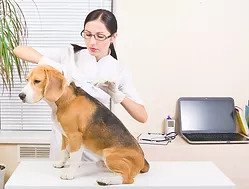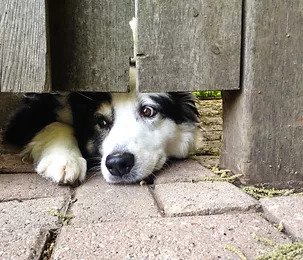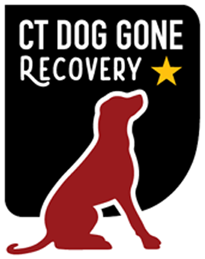Simple Proactive Steps Every Dog Owner Should Take Before Your Dog Goes Missing:
These tips can help you find your dog more quickly if the inevitable happens, and possibly help you avoid losing your dog all together:
 If the finder reports the dog to animal control, the dog should be scanned for a chip. Vet offices and shelters will also scan a dog for a chip. Additionally, a microchip will also establish proof of ownership. It is important that dog owners register and keep the information current with the microchip company. (Too often dogs are found that are microchipped but the chip was never registered.) Have your veterinarian scan for the chip when you go for an annual physical to make sure the chip has not moved (It’s rare, but it does happen).
If the finder reports the dog to animal control, the dog should be scanned for a chip. Vet offices and shelters will also scan a dog for a chip. Additionally, a microchip will also establish proof of ownership. It is important that dog owners register and keep the information current with the microchip company. (Too often dogs are found that are microchipped but the chip was never registered.) Have your veterinarian scan for the chip when you go for an annual physical to make sure the chip has not moved (It’s rare, but it does happen).
Buy a Martingale Collar which includes the dog’s name and your cell phone number embroidered on.
Check your dog’s tags to be sure they have the current information along with the current rabies tag. All can be traced back to the owner.
Keep a current picture of your dog on file. The picture should be clear, show the dog’s fully body, and show any distinct markings your dog has.
 Check your fence frequently for any breaches, especially if there has been some severe weather. If you use a lawn service, a pool cleaning service, or any other service that allows others access to your yard, check to see if your gate is closed before you take your dog out in the yard.
Check your fence frequently for any breaches, especially if there has been some severe weather. If you use a lawn service, a pool cleaning service, or any other service that allows others access to your yard, check to see if your gate is closed before you take your dog out in the yard.
Always keep your dog on a safe leash when outside of your home. Retractable leashes can be dangerous to both you and your dog and are not sound to use. If your dog is new to you or skittish in some situations, use a Martingale collar and harness with a buckle in the front. Your leash should have a double attachment- one for the collar and one for the harness. Martingale collars do not allow the dog to slip its head out the collar and pull free. Use a long lead (not retractable) when walking in the woods.
Equip their pet with a pet GPS or tracker tag. Information about your pet’s location is transmitted to your cell phone. There are many models and prices available. If this is of interest to you, search pet tracking and GPS tags on the web.
Never leave your dog in a yard or in a car unattended. Be outside when your dog is. When you place your dog outside, be there with your dog. Unattended dogs, even when left for a moment, can be taken with the intent to keep, sell, or (even scarier) use as bait in illegal dog fighting. There even have been cases where wildlife such as coyotes has climbed over 6 ft fences to grab a smaller dog. To prevent these cases, never leave any size or age dog outside or in a car unsupervised.
Teach your dog a solid recall command. When your dog has a strong recall,the chances of them taking off from you when they may be off leash are lessened substantially. A good source to help you teach this command: Teaching a Reliable Recall found in Whole Dog Journal.
When Taking your Dog in the car, close the door of the car with the Leash Handle on the Outside of the door, so you can have a handle of the leash BEFORE you open the door to take your dog out. Keep all doors and windows locked in the car while driving.
Secure your dog safely in your car when transporting it from one place to another. Accidents can happen at any time. Securing your dog safely inside your car will help your dog from escaping through broken windows or popped open doors in the event of an accident. Additionally, it will prevent a loose dog from falling or jumping out an open window or door or jumping off or being thrown from the bed of a truck. Selecting a safe method to keep your pup secure is extremely important. Not all travel crates or harnesses are equally safe. Presently, the pet products industry doesn’t have any particular regulations it needs to follow in terms of safety restraints. Therefore, there are many products claiming they will keep your pet safe while in fact, they can be extremely dangerous for your pet if an accident should occur. This short video demonstrates a few examples where certain travel harnesses have failed restraint testing.
The Center for Pet Safety and PetAutoSafety.com websites may be helpful in determining what the best travel restraint would be for your dog.
